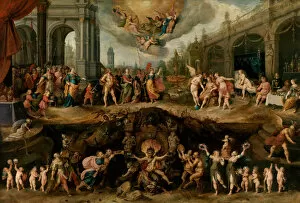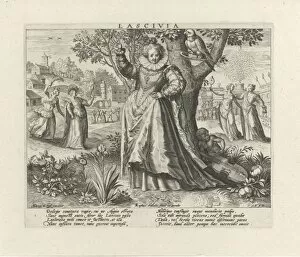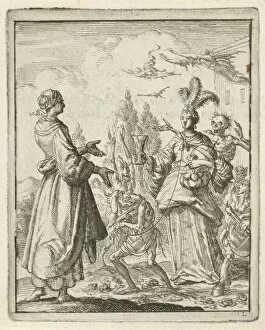Luxuria Collection
Luxuria, the Latin word for lust or luxury, has been a recurring theme in art throughout history
All Professionally Made to Order for Quick Shipping
Luxuria, the Latin word for lust or luxury, has been a recurring theme in art throughout history. From the medieval period to the Renaissance and beyond, artists have depicted this vice in various forms and contexts. In "The Seven Virtues" by Pesellino, we see Luxuria as one of the seven deadly sins that humans must overcome to achieve moral perfection. This painting from the 15th century reminds us of the importance of self-control and temperance. Hieronymus Cock's engraving titled "Luxury" captures the allure and temptation associated with indulgence. The black-and-white photo emphasizes the contrast between light and darkness, symbolizing our struggle between virtue and vice. In "Luxuria or Lust, " Luxuria takes center stage as an embodiment of desire and sensuality. Created in 1558, this artwork serves as a cautionary tale about succumbing to earthly pleasures without restraint. "The Penitent Mary Magdalene visited by the Seven Deadly Sins" portrays Luxuria alongside other vices seeking redemption from Mary Magdalene. This piece from the early 17th century reminds us that even those consumed by sin can find forgiveness through repentance. Andrea Mantegna's masterpiece "Minerva Expelling Vices from the Garden of Virtue" depicts Luxuria being banished along with other sins. The artist highlights how virtue triumphs over temptation when guided by wisdom. Hieronymus Bosch's depiction of "The Seven Deadly Sins" showcases Luxuria among a grotesque ensemble representing all vices. His intricate details serve as a reminder of humanity's propensity for sinful desires if left unchecked. Domenico Tintoretto's painting titled "Prosperity" presents an alternative perspective on luxuries - it celebrates abundance and material wealth while urging viewers not to let these possessions corrupt their souls.





























